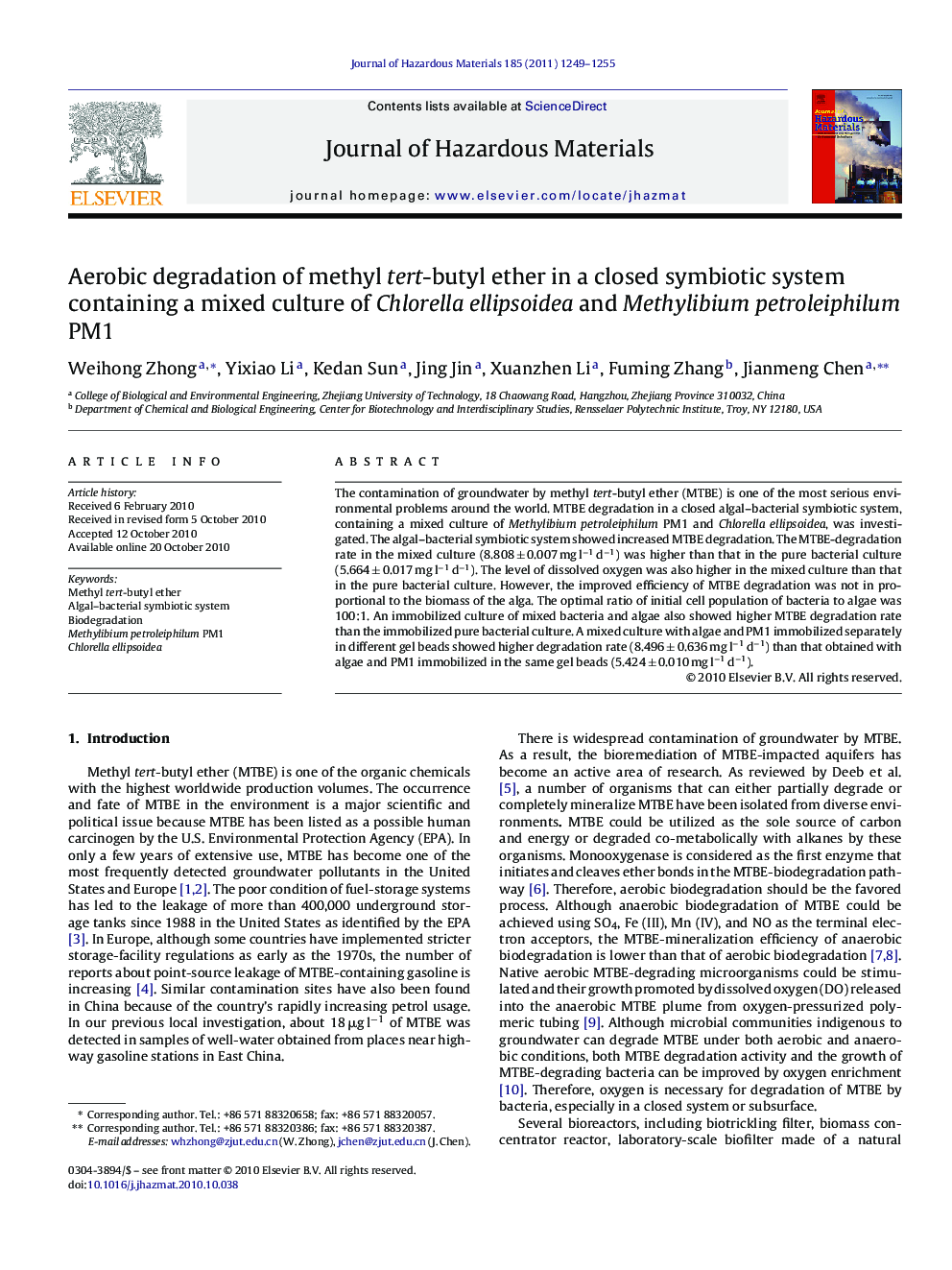| Article ID | Journal | Published Year | Pages | File Type |
|---|---|---|---|---|
| 579916 | Journal of Hazardous Materials | 2011 | 7 Pages |
Abstract
The contamination of groundwater by methyl tert-butyl ether (MTBE) is one of the most serious environmental problems around the world. MTBE degradation in a closed algal-bacterial symbiotic system, containing a mixed culture of Methylibium petroleiphilum PM1 and Chlorella ellipsoidea, was investigated. The algal-bacterial symbiotic system showed increased MTBE degradation. The MTBE-degradation rate in the mixed culture (8.808 ± 0.007 mg lâ1 dâ1) was higher than that in the pure bacterial culture (5.664 ± 0.017 mg lâ1 dâ1). The level of dissolved oxygen was also higher in the mixed culture than that in the pure bacterial culture. However, the improved efficiency of MTBE degradation was not in proportional to the biomass of the alga. The optimal ratio of initial cell population of bacteria to algae was 100:1. An immobilized culture of mixed bacteria and algae also showed higher MTBE degradation rate than the immobilized pure bacterial culture. A mixed culture with algae and PM1 immobilized separately in different gel beads showed higher degradation rate (8.496 ± 0.636 mg lâ1 dâ1) than that obtained with algae and PM1 immobilized in the same gel beads (5.424 ± 0.010 mg lâ1 dâ1).
Related Topics
Physical Sciences and Engineering
Chemical Engineering
Chemical Health and Safety
Authors
Weihong Zhong, Yixiao Li, Kedan Sun, Jing Jin, Xuanzhen Li, Fuming Zhang, Jianmeng Chen,
